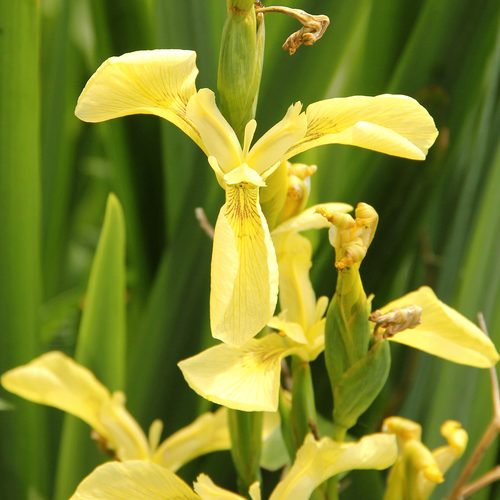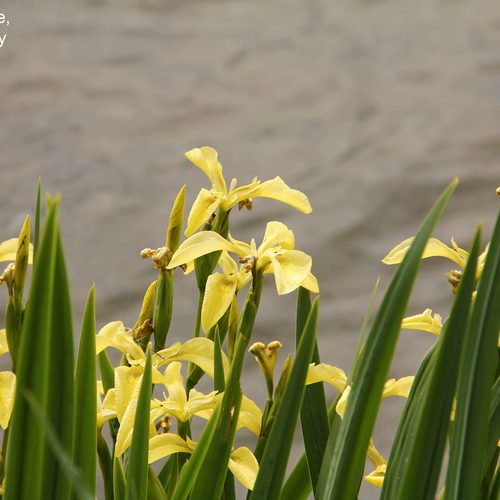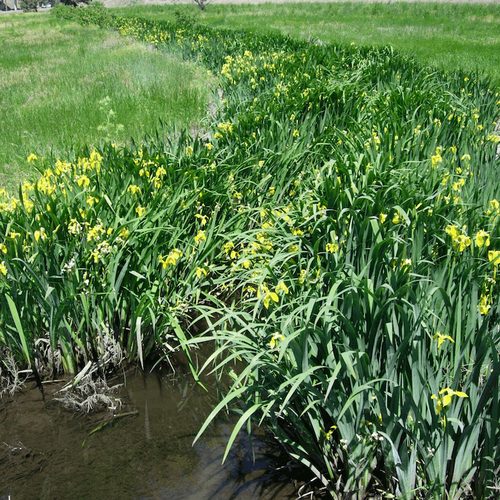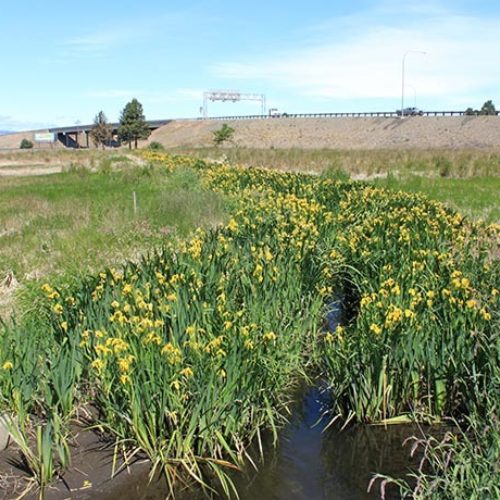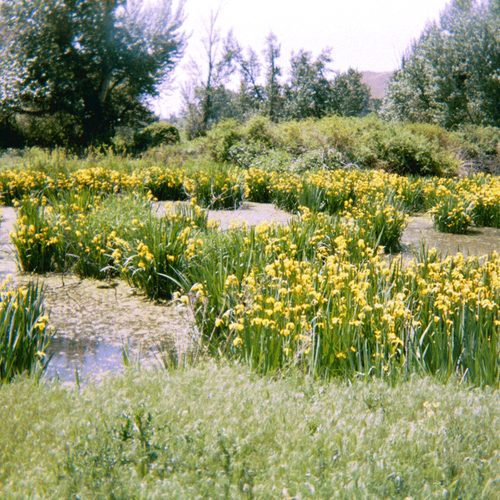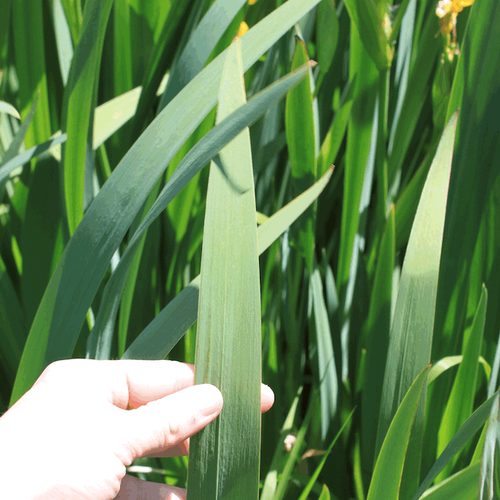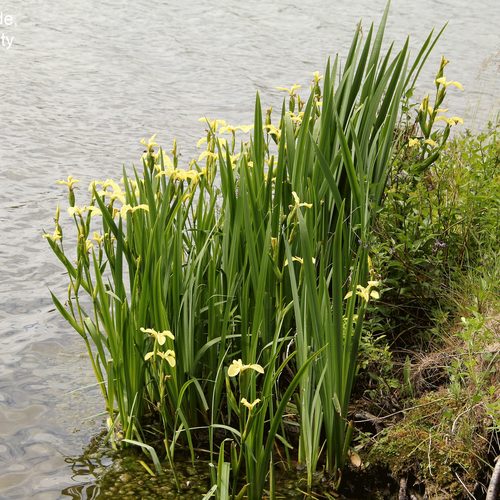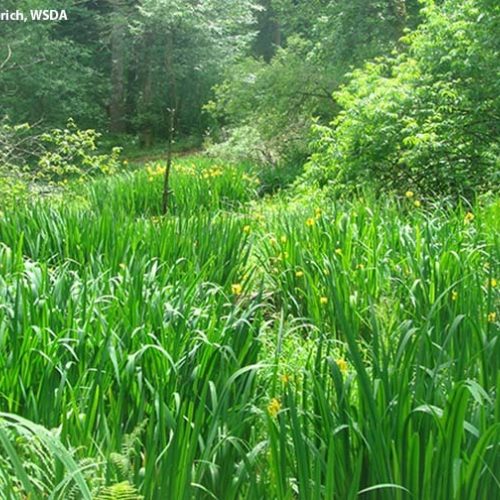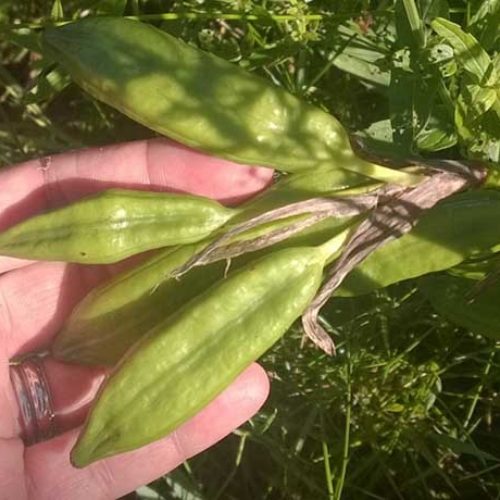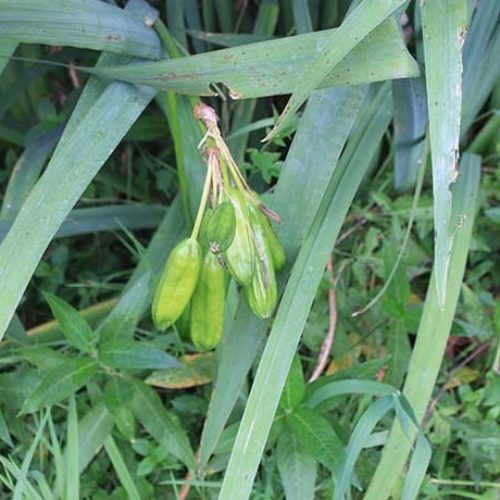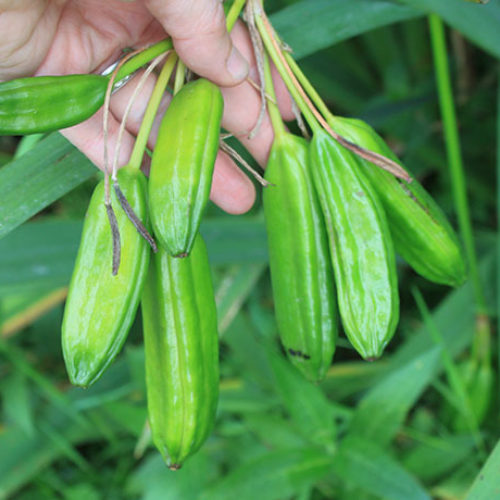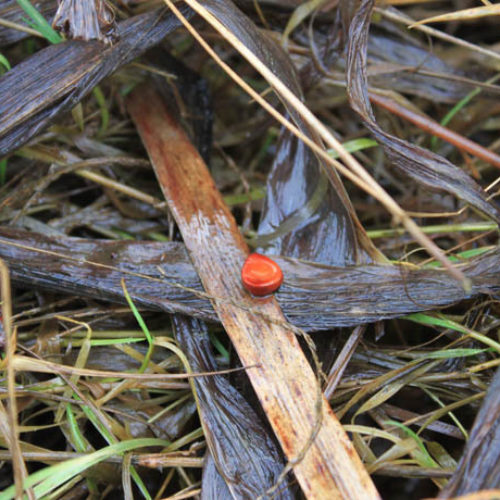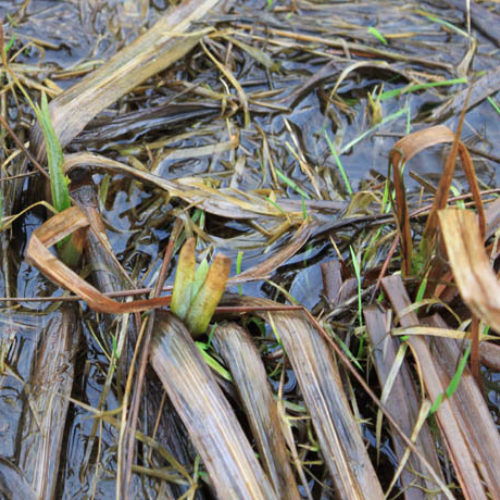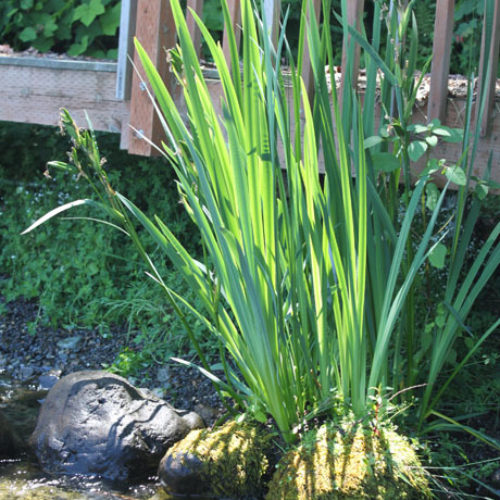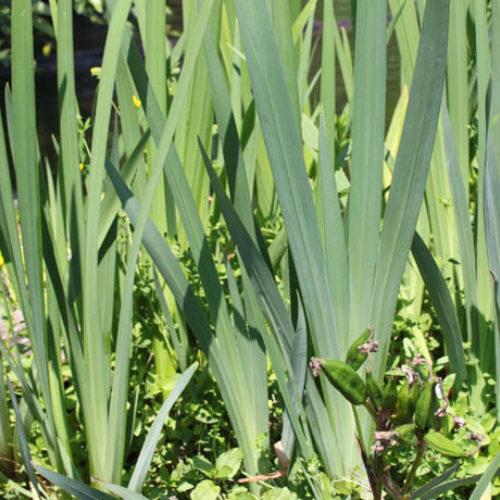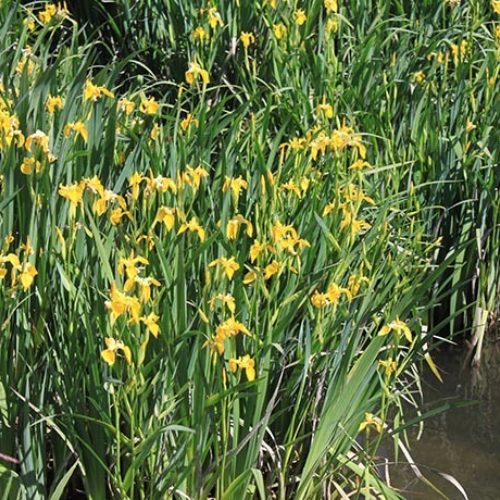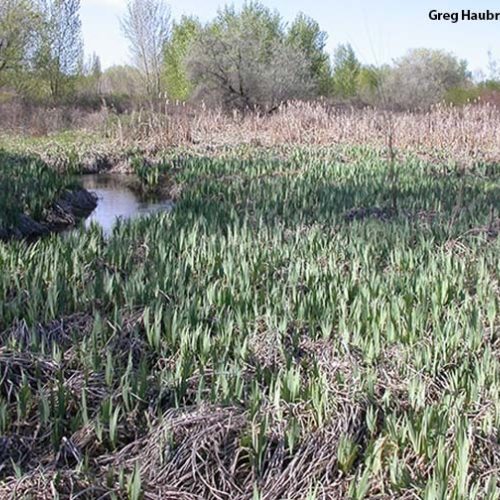Yellow Flag Iris
Iris pseudacorus
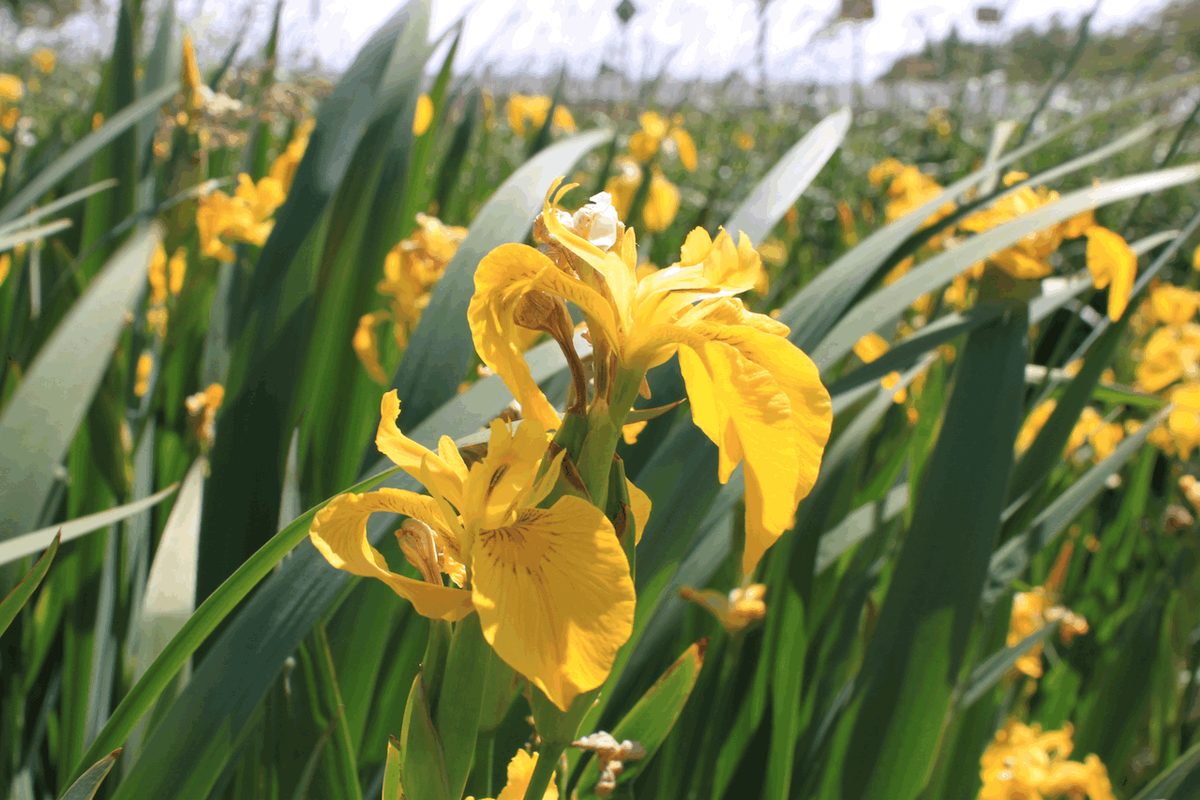
Family: Iridaceae
Other Common Names: yellow iris
Weed class: C
Year Listed: 2002
Native to: Europe, Great Britain, North Africa and the Mediterranean region.
Is this Weed Toxic?:
humans, livestock
Legal listings:
This plant is also on the Washington State quarantine list. It is prohibited to transport, buy, sell, offer for sale, or distribute plants or plant parts of quarantined species into or within the state of Washington or to sell, offer for sale, or distribute seed packets of seed, flower seed blends, or wildflower mixes of quarantined species into or within the state of Washington. Please see WAC 16-752 for more information on the quarantine list. For questions about the quarantine list, contact the Washington State Department of Agriculture's Plant Services Program at (360) 902-1874 or email PlantServices@agr.wa.gov.
Why Is It a Noxious Weed?
Yellow flag iris is an invasive ornamental perennial that is a problem in many states and other countries. It will sicken livestock if ingested and is generally avoided by herbivores. Contact with its resins can cause skin irritation in humans.
How would I identify it?
General Description
Yellow flag iris is a perennial, aquatic, herbaceous plant which grows 2 to 3 feet tall along shores in shallow water. Rhizomes spread and form large clumps.
Flower Description
Flowers few to several near stem ends. Flowers pale to dark yellow with brownish purple mottled markings. Flowers have 3 sepals and 3 petals, with petals shorter than sepals.
Leaf description
Stem and basal leaves present. Basal leaves are broad, flat, sword-shaped and stalkless. Stem leaves reduce in size going up the stem.
Stem description
Stems branched once and solid.
Fruit Seed Description
Capsules form from flowers, somewhat 3 angled and filled with flattened, D-shaped seeds.
Where does it grow?
Yellow flag grows in temperate wetlands along the margins of lakes and slow-moving rivers. It is most commonly found in very shallow water or mud. It tolerates drying and anoxic sediment and is also tolerant of some salinity, and high soil acidity. Please click here to see a county level distribution map of yellow flag iris in Washington.
How Does it Reproduce?
Yellow flag spreads by seeds and rhizomes. Up to several hundred flowering plants may be connected through rhizomes. Rhizome fragments can form new plants if they break off and drift to suitable habitat.
How Do I Control It?
Mechanical Control
If pulling or digging yellow flag care should be used to protect the skin as resins in the leaves and rhizomes can cause irritation. Because rhizome fragments can grow to form new plants, all rhizome fragments must be carefully removed.
Cultural Control
Seeds germinate and grow well after being burned in late summer. Also readily resprouts from rhizomes after burning.
Herbicide Control
It is best to cut the stems off, dispose of them properly, then apply the appropriate herbicide to the stump. Please refer to the PNW Weed Management Handbook, or contact your county noxious weed coordinator.
For More Information
See our Written Findings for more information about yellow flag iris (Iris pseudacorus)
Yellow Flag Iris Control and Education report
Cowlitz County NWCB Fact Sheet on yellow flag iris
Thurston County NWCB Fact Sheet on yellow flag iris
Whatcom County NWCB Fact Sheet on yellow flag iris
Kitsap County NWCB Fact Sheet on yellow flag iris
Control Options for yellow flag iris from Lincoln County NWCB
Control Options for yellow flag iris from Whatcom County NWCB
Control Options for yellow flag iris from King County NWCB



